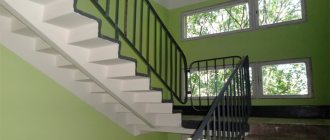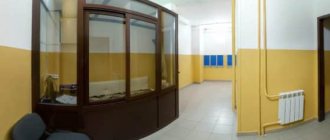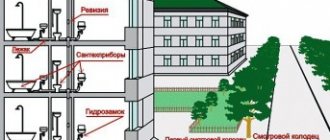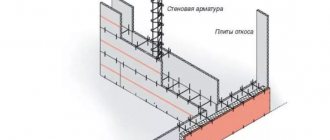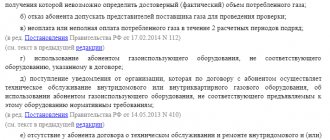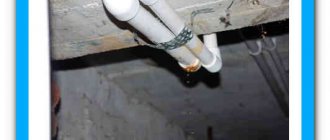What temperature should radiators be in winter?
If the apartment is still cold when the heating season begins, you need to find out the reasons for this deviation. The most common is airiness in the system, which is easy to deal with on your own. If radiators and pipes work normally, most likely, the standard heat in the apartment does not depend on them.
Standards
Heat transfer standards for batteries are the values established by law for heating radiators, which are necessary to maintain a comfortable microclimate in a living space and are +18...+25°C. They are established by SNiP 41-01-2003.
Minimum and maximum value
Legislation establishes standards for heat supply indicators:
- The battery temperature of +95°C is maximum if a two-pipe heating system is used.
- +115°C is the maximum threshold for houses with a single-pipe system.
- The optimal heat transfer from radiators in winter is +80…+90°C. An increase to +100°C is dangerous due to boiling of the coolant. To lower the heating level, you need to install a regulator.
The minimum value is dependent on the outside air temperature in winter: it increases from +39°C at +5°C to +70°C at -15°C. A specific minimum size has not been established; heating is designed to provide heat in the living space at the proper level.
Principles of standards
Laws establish standards that must be followed by public utilities. Regional leaders can make climate-based changes. This is established by local authorities using appropriate documents.
What to do if the standards are not met in an apartment building? Residents have the right to appeal to regulatory organizations.
There is currently a bill in force that defines maximum tariff indices. This is determined from various factors, including local conditions.
Heating radiator temperature in the apartment: normal
Minimum indicator
It happens that even when the heating is turned on, there is still not enough heat in the apartment. This happens if the standard temperature of the heating radiators in the apartment does not correspond to the real one. As a rule, this happens for several reasons, the most popular of which is airiness in the system. To eliminate it, you can call a specialist or handle it yourself using a Mayevsky crane.
If the culprit is the unsuitability of batteries or pipes, then you cannot do without specialists. In any case, the period when the heating system was not working and the temperature of the radiators in the apartment did not meet the standards according to GOST standards should not be paid by the consumer.
Unfortunately, there is no minimum standard for the temperature of heating radiators in an apartment, so you have to navigate by the air temperature in the room. What heating temperature should be in the apartment? Heating standards for an apartment in an apartment building should vary from +16 to +25 degrees.
In order to document that the temperature of the heating pipes in the apartment does not correspond to the norm, you need to invite a representative of the organization that provides heat to the house.
Maximum indicator
Heating parameters in an apartment building are described in some detail in SNiP 41-01 of 2003:
- If the building uses a two-pipe heating structure, then the maximum permissible radiator temperature is considered to be +95 degrees.
- For a single-pipe system, the temperature of the heating pipes in the apartment is +115.
- The optimal temperature of heating radiators in an apartment (the norm in winter) is +80-90 degrees. If it approaches +100 °C, urgent measures are needed to prevent the coolant from boiling in the system.
Although radiator manufacturers indicate on their products the maximum temperature threshold is quite high, you should not reach it too often, as this can lead to their failure.
To make sure that the heating standards in the apartment in winter correspond to the guests, you need to measure the temperature of the radiators.
For this:
- You can use a regular medical thermometer, but keep in mind that you will need to add a couple of degrees to its result.
- Use an infrared thermometer.
- If you only have an alcohol thermometer at hand, then you need to tape it tightly to the radiator, after wrapping it in heat-insulating material.
If the temperature does not coincide with the norm, then you need to write a request to the heating network office to carry out a control measurement. Based on this request, a commission must come and make all the calculations.
Regulations
The heating level in apartments is regulated by the following documentation:
- GOST 30494-96. It records microclimate levels in residential buildings. It determines the optimal and acceptable levels;
- SP 23-101-2004. The document specifies the rules that builders must take into account when building a house. This allows you to create an optimal microclimate in your home;
- SNiP 01/23/99. Defines hygiene rules;
- SNiP 01/31/2003. Sets the internal temperature level.

Based on this documentation, different types of premises are determined.
Residential buildings are classified in the first category. Temperature and humidity are optimal only if they create conditions for normal human life.
There are parameters that cause discomfort, but they are considered acceptable. The air temperature should be +20 degrees or higher, and the humidity should not exceed 80%.
Heating standards for individual heating systems
Apartment with autonomous heat supply
In this case, the concept of heating norm should be understood as the heat transfer of a heating device, which is per unit area of the room where this device is installed. It is worth distinguishing between the concepts of “radiator” and “heating device”. For example, ventilation and air conditioning while simultaneously heating it, which is performed using combined air conditioners, does not fall under the concept of either a radiator or a heating device.
The formula for determining the norm for heat supply systems with a known thermal power of the heating device P, W has the form:
Here S is the area of the room in m2 for which this calculation is performed; h – height of the room in m; 41 – empirical coefficient of minimum thermal power for premises with permanent location of people.
The resulting value must be correlated with the actual heat transfer of the heating device. Depending on the type of heating system, this parameter per section is:
- For cast iron radiators - 90-160 W (higher data corresponds to a maximum coolant temperature of 90°C; for lower values, the heating rate should be proportionally recalculated).
- For steel radiators - 60-170 W (as the coolant temperature decreases, the thermal power of steel radiators drops more sharply than that of cast iron ones).
- For aluminum and bimetallic radiators 160-200 W.
Dividing the P value by the standard heat transfer rate of a radiator of a certain type, we obtain the number of sections required to ensure the required standards. All that remains is to purchase them. Thus, for an individual home, compliance with the thermal regime is ensured mainly due to the design features of heating devices.
To increase the accuracy of calculating standards, it is necessary to take into account the method of connecting heating devices. Thus, with a bottom connection, the standard thermal power of radiators is reduced by 10%, and when connected via a single-pipe system - by 25-30%.
It should be noted that the thermal power of a heating device of any type is largely determined by the permissible pressure of the coolant that is pumped through this device. The minimum pressure in the heating system must be at least 2-4 atm. and the maximum is 6-8 atm. In the first case, heating will be extremely ineffective, and in the second, the pipelines may not withstand it. Thus, heating standards for an individual house (or for autonomous heating of an apartment) are calculated depending on the type of heating devices and the actual coolant pressure in the heating system.
What state standards regulate heat supply?
GOSTs or state quality standards serve to regulate relations between the consumer and the manufacturer/supplier of any product or service. In this case, the manufacturer or supplier of heating services is the heating company (boiler house). Housing and communal services are a legal entity whose responsibilities, according to the contract, include providing citizens with heating services. The consumer of such a service is, accordingly, any person who has entered into an agreement for the provision of services with the company.
And in each specific situation, the state standard will determine acceptable norms, boundaries of norms and deviations from them for each industry. It is these standards that regulate what temperature of heating radiators in an apartment is normal. Reaching what degrees constitutes a violation of state standards and what measures should be taken?
So what standard determines what the desired temperature of the battery in the apartment should be? GOST 30494-2011 is a quality standard required by the state for all service providers to properly perform their services. determines everything related to heat in a comfortable apartment.
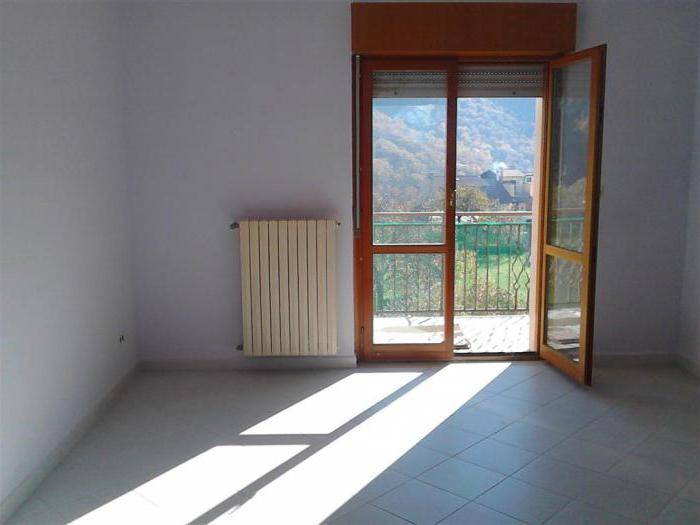
But whatever the heating temperature in the apartment, the norm should always be within the range of 20 to 22 degrees Celsius in order for the room to be suitable for habitation. The minimum mark according to sanitary standards is 18 degrees Celsius. The temperature in the room should not be below this mark (provided that your windows are closed and the room is sealed, heating elements and other additional heating devices are not turned on)
It is also worth noting that today the GOST standard for the temperature of heating radiators in an apartment is not a mandatory rule, but has only a recommendatory quality standard, which the service company is free to adhere to or not to adhere to at its discretion. In practice, it is almost impossible to force a heating company to comply with GOST requirements. Also, the rule about what the temperature of the batteries in an apartment should be is regulated by SANPIN standards. And although GOST standards are legally higher than SANPIN standards, it is the latter that are used as a measure of standards in enterprises. This means that it will depend on them what the temperature of the heating radiators in the apartment will be.
Temperature conditions in various rooms and their standards
Although the standards for apartments in apartment buildings are determined by regulatory documents, they differ somewhat depending on the location of the dwelling in the building structure. Thus, the heat standard in a corner apartment in winter, which is exposed to frost and wind more than other rooms, ranges from +20 °C.
Inside the apartment, different temperature standards also apply for different rooms, depending on their purpose. Thus, GOST establishes the following permissible and optimal values for:
- living rooms - 18 °C (20-22);
- kitchens - 20°C (22-23);
- combined toilets and bathrooms - 18 °C (24-26);
- toilets - 18 °C (19-21);
- premises for study and recreation - 18 °C (20-22);
- pantries - 14 °C (16-18);
- inter-apartment corridors - 16 °C (18-20);
- staircases, lobbies -12°C (16-18).
According to the same GOST, from 24:00 to 5:00 in residential premises the temperature can be reduced by 3°C.
How to determine that the water temperature in radiators is below normal
A device that measures surface temperature with a beam.
The quality of heating is often determined by the air temperature in the room. If you feel that the rooms are cool, you need to measure the temperature. The maximum permissible temperature is +18 degrees. If it is lower, then you need to identify the cause. The main reasons may be leaky windows and doors, but a more compelling reason is low water temperature in the radiators.
To determine what the temperature of the batteries in your apartment should be, there are special calculations. They are compiled by specialists who compare the temperature of the water in the radiators and the ambient temperature. You need to call a special service that will measure the temperature in the heating radiators in your apartment. The obtained data is compared with the temperature graph data. This graph has already calculated what temperature should be in the direct and return water supply pipes.
Table. Temperature graph of the ratio of heating to ambient temperature.
Ambient temperature
Direct water temperature
Return water temperature
These data are given for a single-pipe heating system, with water supplied from bottom to top. According to the table, when the outside air temperature is, for example, -10 degrees Celsius, the return water temperature should be at least 63 degrees. And this does not depend on which floor the measurements are taken - on the first or fifth. In a two-pipe heating system, the water temperature at -15 outside is allowed to be 95 degrees with direct water supply.
Each locality has its own temperature chart. It is approved by the city administration.
If the battery temperature in the apartment is below normal, this means that the boiler room is saving on heating. After water measurements, specialists draw up a report, and utility workers must correct all problems. At the same time, everyone has the right to demand a recalculation of heating fees. The rent should be reduced according to the square footage of the apartment. The temperature of the water in the radiators is one of the main factors in a warm home. According to battery temperature standards, a coolant must be supplied to the apartment, the degree of heating of which ranges between 80-85 degrees.
It is very simple to make heating with heating elements in your home, and each heat exchanger will not depend on the others. To do this, simply screw the heating element into the bottom end of the battery and connect it to the electrical network.
Here you will find everything about infrared heating of a private house: reviews, calculations and drawings.
How to measure the battery temperature yourself?
A pyrometer is usually used for measurement, but a regular thermometer will also work.
When recording the temperature with a thermometer, you need to add 1-2 degrees to its readings. To record the level of heat from the battery, you can attach an alcohol thermometer to it. You need to tie it very tightly, covering the device with heat-insulating material.
ATTENTION! All devices that independently measure heat levels must have a quality certificate. It is recommended to choose a device with a range from 5 to 40 degrees.
Temperature of heating radiators in the apartment: standards
Apartment heating standards determine the specific value of a sufficient indicator for residential and non-residential premises, with permissible deviations from their indicators.
They are developed more simply than for work premises, since those living in the housing exhibit low and, at the same time, stable activity:
- For residential premises, the air temperature is from 20 to 22 degrees Celsius, while acceptable limits are considered to be from 18 to 24 degrees;
- If we take corner rooms, then the indicator should not be less than twenty degrees, since such rooms are more susceptible than others to low external temperatures and winds;
What temperature should the apartment be during the heating season?
What to do if the radiators in the apartment are cold, read here.
- The kitchen is a work space where, in most cases, there is a heat source - an electric or gas oven. The temperature in this room should be between 19-21 degrees. Acceptable is from 18 to 26 degrees;
- The optimal temperature for toilets is 19-21 degrees. The limit values range from 18 to 26. One way or another, bathrooms are not among the coolest rooms;
- The bathroom is a hot room because it has a fairly high level of humidity. The minimum temperature here ranges from 18 to 24 degrees. The permissible maximum is 26 degrees. But still, at another 20 degrees, the comfort of using this room decreases;
- For non-residential premises, the temperature is calculated based on the frequency of their operation. In corridors, the acceptable temperature level is 18-20 degrees, however, 16 is also acceptable. For storerooms, the air temperature should be 16-18 degrees. Permissible limits are 12 and 22 degrees.
Since the need for heat during sleep is somewhat reduced, according to GOST, it is allowed to lower the temperature level in residential premises to 3 degrees from 00.00 to 05.00 in the morning. Such a decrease in the norm will not be considered a violation.
What are the requirements for the heating system?
The heating process in a multi-storey building is based on the results of many engineering calculations, sometimes they are not so successful.
The complexity of the process lies not in the delivery of heated water to the facility (building), but in its uniform distribution throughout all apartments, under the conditions of ensuring standard temperature indicators and optimal humidity in the apartments.
How effective such a system will be directly depends on the coherence of all its elements, including pipes and radiators in each apartment.
For this reason, replacing radiator batteries without taking into account the features of the heating system can lead to extremely undesirable consequences: one of the apartments may experience a shortage of heat, while another will have an excess of it.
It is through the establishment of standards that optimization of heating of city apartments is achieved:
- Safety requirements determine that the temperature of the coolant in the heating system should be 20 degrees less than the temperature of materials that tend to spontaneously ignite. For multi-apartment residential buildings, the standard coolant temperature should be in the range from 65 to 115 degrees, taking into account the season;
- When water overheats to 105 degrees, measures must be taken to prevent the liquid from boiling;
- The standard limit for the temperature of water flowing through heating radiators is 75 degrees. If this value is exceeded, the battery must have a restrictive design;
- The heating season in mid-latitudes begins in mid-October and ends in mid-April. In reality, service providers must initiate the start of heating from the moment when an average daily temperature of no higher than 8 degrees is recorded for five consecutive days.
Standard temperature standards for heating systems
Apartment standards regarding the temperature of the coolant in radiators and pipes indicate a specific indicator for a living space. In this case, only small deviations are allowed .
Indicators are most often developed for apartments, less often for work premises. This is due to the fact that residents of apartment buildings often want to know what temperature the batteries should be. The data is indicated in special SNiPs, and you can also find them out from other resources.
ATTENTION! In apartment rooms with central heating, the temperature must be maintained at 20 to 22 two degrees Celsius. In apartment buildings, a slight deviation from the norm is allowed in the range from 18 to 24 degrees.
For some rooms, other standard options have been developed.
- If the room is corner, the normal temperature during the heating season is 20 degrees Celsius. The walls in corner rooms are cooled more than others by outside air.
- In the kitchen, food preparation appliances work for a large amount of time. Here the temperature must be maintained from 19 to 21 degrees Celsius, and the permitted deviations are 19-26.
- What is the normal bathroom temperature? Standards indicate an indicator within 18-24 degrees. It is recommended to maintain a temperature of 20 degrees; at a lower value in a bathroom with a high level of humidity, it will not be comfortable and warm enough.
- Standards have also been developed for non-residential premises. These include corridors, storage rooms, and other areas of the apartment.
When calculating, which is carried out by professional specialists, the frequency of use of the rooms is taken into account . In some, it is enough to maintain the temperature regime of the central heating water such that it gives even 16-18 degrees (for example, in the pantry, where food is often stored). The permissible minimum limit is 12 degrees, the maximum is 22 degrees.

ATTENTION! The temperature in the apartments of the heat supply radiators of an apartment building may decrease slightly at night (from 0.00 to 5.00 a.m.). According to GOST, such a decrease in heat in pipes is permissible (no more than 3 degrees) and is not considered a violation.
If the temperature in the apartment is below normal, what to do?
If during the measurements a deviation from the norm was found to be smaller, it is necessary to notify the utility service or management company that services the apartment building. She sends an emergency team to draw up a measurement report. This is an official document containing a number of details, on the basis of which a decision is made to recalculate utility bills for services. It is drawn up in two copies, one of which remains in the hands of the tenant.
If there is a significant deviation from the norm, the management company is obliged to recalculate heating payments for the month in which these deviations were discovered.
For example. During the heating season, the air temperature in the corner room is fixed at 16 °C (the norm is +20 °C) 14 hours from the design period (it is 720 hours). After taking readings from an individual metering device, the thermal energy consumption for the past month amounted to 0.7 Gcal at a tariff of 1,900 rubles. 32 kopecks for 1 Gcal. Since the air temperature was below normal, the amount of payment for heating is reduced by 0.15% for each hour when it is recorded in the act.
Recalculation of utility bills for heating
- The fee for 14 hours when heating was provided of inadequate quality is reduced by: 0.15% x 14 hours = 2.1%.
- Standard payment for heat in the billing period (30 days or 720 hours): 0.8 Gcal multiplied by the tariff of 1,900 rubles. 32 kopecks total 1,520 rub. 25 kopecks
- As a result, after the reduction we get: 1,520 rubles. 25 kopecks x (100% - 2.1%) = 1,488 rubles. 32 kopecks
There are cases when patient residents measure their temperature for several days and during this period it constantly falls short of the norm. Then the fee reduction becomes significant. But not every management company is ready to unquestioningly recalculate the cost of heating services. Often, dissatisfied tenants can only defend their rights in court.
Please note that heat payments can only be recalculated once a calendar year. The process of registration and collection is quite lengthy, requiring scrupulousness and a large number of documents.
Heat supply requirements
According to the above-mentioned Resolution, central heating is launched after 5 days, during which the average outside air temperature does not exceed +8 °C. If after 4 cold days it becomes warm again on the fifth, the start of the heating period is delayed until the specified conditions are met. Heating standards stipulate that stopping heating occurs according to the same principle: 5 days must pass with an average daily temperature of +8 °C.
The Decree contains changes that provide for an individual approach to the supply of heat to buildings that fully comply with the requirements for thermal insulation. Heating supply organizations are required to turn on the heating of such houses as soon as the outside temperature drops to the value specified in the design documentation. It is not difficult to guess that in reality these changes are not being carried out very well, and the start of heat supply occurs simultaneously in all residential buildings - insulated and ordinary.
During the heating season, the centralized heating system must provide multi-apartment residential buildings with a sufficient amount of thermal energy. In order for the heat supply service to be considered fully provided, the following requirements for permissible air temperature in premises for various purposes must be met:
- living rooms - from 18 to 24 °C, corner rooms - from 20 °C;
- bathroom (or separate toilet and bathroom) - from 18 to 26 °C;
- kitchen (taking into account the heat source in the form of a stove) - from 18 to 26 ° C;
- pantry - from 12 to 22 °C;
- corridor - from 16 to 20 °C.
For apartment buildings located in cold northern regions, the lower limit of permissible temperature in living rooms is increased to +20 °C (in corner rooms up to +22 °C). The increase comes into force provided that the frost outside reaches -31 °C (on average per day) and lasts for at least 5 days. It is also allowed to decrease the temperature in the apartment by 3 °C from midnight to 5.00 am.
The heat supply to a number of apartments or the building as a whole may be interrupted as a result of an emergency and unforeseen repairs. But regulatory documents allot a certain time for carrying out repair work, depending on weather conditions. The colder the outside air, the sooner the relevant service must repair the fault. The total duration of interruptions in heating operation is no more than 24 hours per month.
Water temperature in the heating system of an apartment building GOST
If hourly deviations from standard parameters are noticed, then the heating fee should be reduced by 0.15%.
This document must be drawn up in two copies, one of which remains with the owner of the apartment. This can be done by calling the manager of the management company, or leaving a written request. In case of violations on the common water supply line, the dispatcher informs the caller about this.
It should be noted that this temperature standard is valid after the opening of the heating season, and there are no indicators for the off-season. You also need to know that hot water must have a temperature from +50°C to +70°C (SNiP 2.08.01.89 “Residential buildings”). It is measured by opening the tap and lowering the thermometer into the container to a special mark.
If the radiators do not warm the room, then the water from the tap will be at a lower temperature, and residents can write an application to the DEZ requesting an inspection.
After inspecting the water supply and heating system, utility workers draw up a report, one copy of which remains with the residents. If the complaint is confirmed, specialists are obliged to correct everything within one day to a week.
Also, if the water temperature in the heating radiators was 3°C lower (during the day) and 5°C lower (at night) than the standard, then the rent is recalculated.
What is established in the standards
The legislation regarding heating specifies the following data:
- The heating season begins with a decrease in the average daily street temperature to +8 degrees. If this is observed for about 5 days, then heating of the room is necessary. The heating season ends with the temperature rising to +8;
- The minimum temperature is set according to the type of room. Its determination must be carried out in each room. The thermometer is located 1 meter from the walls and 1.5 meters from the floor;
- Hot water should be supplied to the house throughout the year, and its temperature should be from +50 to +70. Deviations are possible only by 4 degrees. If these rules are violated, then residents have the right to reduce utility bills by 0.15%.
Citizens need to write a statement regarding lowering the water or heating temperature. It is submitted to the controlling organization. Upon inspection, a report is drawn up. Violations must be corrected within 7 days.
The legislation stipulates the obligation of companies to supply heat during the heating season. The accident cannot last more than 16 hours. At this time, the temperature should be normal.
Factors affecting the temperature in the apartment
The air temperature in a living room in winter is important. It is formed not only through the influence of heating devices
The following factors should also be taken into account:
Climatic conditions of a specific region
The minimum temperature plays an important role. Season. The premises are heated not only in winter
The devices also work in spring and autumn. At the same time, temperature indicators during this period are different. Human factor or individual preferences. Materials that were used to build the house. Today, quite often an additional layer of insulation or waterproofing is used.
The permissible wall temperature in an apartment, according to current standards, should not be lower than 20° degrees. Otherwise, it will not be possible to create comfortable living conditions in the room. It is also affected by the weather and dew point.
Humidity
There are standards not only for heating in the house but also for humidity. This indicator can change in an apartment due to various factors, for example, due to a malfunction of ventilation. The problem must be solved by municipal institutions.
In winter, humidity should be between 30-45%, but 60% is acceptable. And the temperature norm is +18+24 degrees. There are no humidity standards in the kitchen and bathroom, since these rooms have operational characteristics.
Heating standards for apartment buildings heated centrally
These norms are the most “ancient”. They were calculated at a time when they did not save on fuel for heating the coolant, the batteries were hot. But houses were built mainly from materials that were “cold” in terms of heat-saving qualities, that is, from concrete panels.
Times have changed, but the norms remain the same. According to the current GOST R 52617-2000, the air temperature in residential premises should not be lower than 18°C (for corner rooms - at least 20°C). At the same time, the organization that supplies thermal energy has the right to reduce the air temperature at night (0-5 hours) by no more than 3°C. Heating standards are set separately for different rooms of the apartment: for example, in the bathroom it should be at least 25°C, and in the corridor - at least 16°C.
Society has been fighting for a long time, and at times not unsuccessfully, to change the procedure for determining heating standards, tying them not to the air temperature in the premises, but to the average temperature of the coolant. This indicator is much more objective for consumers, although it is unprofitable for the heat energy supplier. Judge for yourself: the temperature in residential premises often depends not only on the operating system, but on the nature of a person’s life activity and living conditions.
For example, the thermal conductivity of brick is much lower than that of concrete, so in a brick house at the same temperature you will have to spend less thermal energy. In rooms such as the kitchen, the process of cooking food does not generate much less heat than from radiators.
Much also depends on the design features of the heating devices themselves. For example, panel heating systems will have a higher heat transfer rate than cast iron radiators at the same air temperature. Thus, heating standards tied to air temperature are not entirely fair. This method takes into account the outside air temperature below 8°C. If such a value is recorded for three days in a row, the heat generating organization must unconditionally supply heat to consumers.
For the middle zone, the calculated values of the coolant temperature depending on the external air temperature have the following values (for the convenience of using these values using household thermometers, temperature indicators are rounded):
Outside air temperature, °C
Temperature of network water in the supply pipeline, °C
Using the table above, you can easily determine the water temperature in a panel heating system (or any other) by using a regular thermometer at the time of draining part of the coolant from the system. For the forward branch, use the data in columns 5 and 6, and for the return branch, use the data in column 7. Note that the first three columns establish the release temperature of the water, that is, without taking into account losses in the transmission main pipelines.
If the actual coolant temperature does not correspond to the standard temperature, this is the basis for a proportional reduction in the payment for the central heating services provided.
There is also an option to install heat meters, but it only works when all apartments in the building are served by a centralized heating system. In addition, such meters are subject to annual mandatory inspection.
What is meant by heating standards?
The norm is understood as the temperature range at which the activation of compensatory mechanisms of heating or cooling does not occur. It should be noted that most people feel comfortable when the temperature is in the range from +21 to +25 degrees.
This indicator is somewhat different for different population groups. For example, according to research, the optimal air temperature in an apartment for children and women is +23-25 degrees. And for men these values are slightly lower and range from +21-23 degrees. Psychologists and hygienists have identified heating standards in an apartment at which a person feels best - this is 18-24 degrees above zero. Therefore, the minimum possible room temperature is +18 degrees.
It is at this value that a person can stay in the house for a long time without outer clothing and without harming his health. Heating standards in an apartment are regulated by law. During the cold period, certain climatic parameters must be maintained in residential buildings and apartments. All this is described in detail in the documentation. According to the norms, heating payments are also calculated. In different cases, standards are set differently.
Since heating parameters in an apartment depend on three factors:
- Climatic features of the region of the country.
- Type of heating: centralized or autonomous. In the first case, to calculate the standard, the location of the apartment is taken into account. For example, corner or not. The coolant temperature is also taken into account. In the second case, the concept of norm is somewhat conditional. It all depends on the comfort of living and the heating boiler.
- Type of heated room.
Air temperature standards according to GOST
The temperature parameters of residential premises are regulated by regulations - SanPiN 2.1.2.2645-10, GOST R 51617-2000 Housing and communal services and general technical conditions, where the temperature regime of rooms is regulated from 18 ° C in winter, from 20 ° C in summer. There is a standard in Government Decree No. 354 on corner rooms and cold regions, where a different acceptable standard is adopted.
The standard air temperature in residential premises is set not lower than +18°C (in corner rooms +22°C), in areas with the coldest five-day period (provision 0.92) -31°C and below, the temperature regime is set to +20°C ( in corner rooms +22°С). Failure to comply with the standard, rather than comfortable, thermal regime is considered a violation.
In corner apartments
Previously, GOST indeed established special rules for corner apartments - 2 degrees higher than usual. Today, the temperature regime is established and regulated by Decree of the Government of the Russian Federation dated May 6, 2011 No. 354.
Exterior walls
The creators of SNiP 02/23/2003 believe that the temperature difference between the internal air and the external surface should be no more than 4 degrees. That is, if the minimum limit for a living space is 18 °C, then the wall on average should not be colder than 14.
When this rule is violated, we can conclude that the house is not insulated enough, and perhaps the seams require updating. The management company servicing the building should take care of this.
Floor
In accordance with SNiP, the temperature of the floor surface in residential premises must be no lower than 16 ° C (as a rule, it exceeds the minimum permissible and ranges from 18 to 20 ° C.).
SNiP 41-01.2003 establishes the normal temperature for heated floors:
- 26 °C for rooms where people are constantly present;
- 31 °C for premises where people stay temporarily.
Children's institutions are recommended to maintain the floor at a maximum temperature of 24 °C.
Requirements for heating networks
With centralized heat supply, the heat source is a boiler house or a thermal power plant, where high-temperature water-heating boilers are installed (in thermal power plants - steam boilers). The fuel is usually natural gas, with other energy sources being used to a lesser extent. The temperature of the coolant at the outlet of the hot water boiler is 115 °C, but the water does not boil when it is under pressure. The need to heat up to 115 °C is explained by the fact that boiler plants operate at maximum efficiency in this mode.
The transition from 115 °C to the required temperature value is provided by plate or shell-and-tube heat exchangers. At a thermal power plant, waste steam from turbines enters heat exchangers to produce electricity. According to regulatory requirements, the water temperature in heating pipes should not exceed 105 ° C, the lower limit depends on street conditions. In this range, the heating of water in the heating network is regulated depending on the weather, for which each boiler room has a temperature graph of the heating system. For home networks, 2 calculation schedules are used:
These figures show the maximum temperature of the supply and return water during the most severe frosts in a particular area. But at the beginning and end of the heating season, when the weather is not yet too cold, there is no point in heating the coolant to 105 °C, so a real temperature heating schedule is drawn up, which describes to what extent the water should be heated at different outside temperatures. The dependence of heating on weather conditions is shown in the table, which presents excerpts from the graph for the city of Ufa:
street air average daily
The table is presented as an example and is correct only for this city; another locality has its own dependence, because the climatic conditions in the country are different.
It is quite difficult to find out exactly what the coolant temperature is in a centralized heating network. To do this, you need to have a remote thermometer that determines the degree of surface heating. So, it is possible to determine to what extent the heating standards in the apartment are met only by the air temperature in the rooms.
Safety requirements when drawing up temperature standards in apartment premises
- Fire safety standards set a limit for the temperatures of materials involved in finishing a house. Heated materials can spontaneously ignite, which is dangerous to human life. The coolant temperature should be 20 degrees below the ignition level. According to standards, the coolant must be heated between 65 and 115 degrees.
- If the water in the pipes is heated to 105 degrees, it will boil, so measures should be taken to lower the temperature.
- How many degrees can a battery have in a residential building? No higher than 75 degrees. If this indicator is violated, restrictive structures must be installed near the radiator to prevent close proximity.
ATTENTION! There are standard dates when the heating season begins and ends. But even outside them, heating can be carried out if the temperature outside remains below 8 degrees for more than five days.
